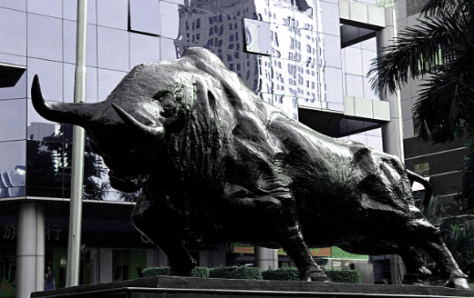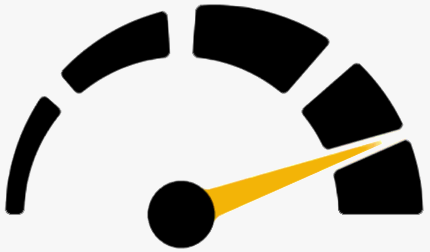Accredited InvestorsAltcoinAnatoli UnitskyAnti-Money Laundering (AML) In CryptoAPIArbitrageArtCoin TokenArticle DirectoryASICAuction Terminology GlossaryBasics of Stock Market InvestingBear MarketBest Crypto Payment Provider In the WorldBitcoinBlockchainBlockchain ConfirmationBlockchain Consensus MechanismBlockchain ForkBlockchain GlossaryBored Ape Yacht ClubBuild a Business That OutperformsBull MarketBuying SkyWay SharesByzantine Fault Tolerance (BFT) ExplainedCasascius CoinCentral Bank Digital Currency (CBDC)Centralized Crypto ExchangeCoinCoinsetCold WalletCollateralCommodity Futures Trading Commission (CFTC)Cross-Chain TechnologyCRUCrypto ExchangeCrypto GlossaryCrypto JokesCrypto Terms to KnowCrypto TickerCryptocurrencyCryptographyCryptojackingCryptounit BlockchainCryptounit GlossaryCryptounit ProgramdApp (Decentralized Application)Dead CoinDecentralized Exchange (DEX)Decentralized Finance (DeFi)Difference Between Bitcoin and EthereumDifferent Ways of Investing MoneyDigital CurrencyDistributed LedgerDo Your Own Research (DYOR)Dollar Cost Averaging (DCA)Dow Jones Industrial Average (DJIA)EncryptionERC-20ERC-721EthereumEvoScentFear Of Missing Out (FOMO)Fear, Uncertainty and Doubt (FUD)Fiat MoneyFNT Fintech CompanyGenesis BlockGlobal Unit PayGlossary of Banking TermsGlossary of Business TermsGlossary of Financial TermsHalvingHODLHot WalletHow Do I Start InvestingHow Rich is Satoshi Nakamoto?How to Create a BlockchainHow to Find Private InvestorsHow to Get Into FintechHow to Program Smart ContractsI Am Thrilled to Be a Part of This Global ProjectInitial Coin Offering (ICO)Initial Public Offering (IPO)Initial Token Offering (ITO)Innovation Basalt TechnologyInnovative Transportation TechnologiesInternational Bank Account Number (IBAN)Investing in Gold Mining StocksInvesting in Gold MiningJagerJoy of Missing Out (JOMO)Know Your Customer (KYC)LedgerLiquidity in CryptocurrencyMaker and Taker Fees in Crypto TradingMarket Capitalization (Market Cap)Meme CoinMetal Credit CardMetaMaskMillenials Now Have Access to Generational WealthMy Best Investment EverNew Digital EvolutionNFT GlossaryOff-Chain TransactionsOn-Chain TransactionsOpen Edition NFTPeer-to-Peer (P2P)Personal Loan GlossaryProbably the Best STO on the MarketProof of Stake (PoS)Real Estate Glossary of TermsReal Estate Investing GlossaryRebase TokenSecurities and Exchange Commission (SEC)Security Token ExchangesSecurity Token Offering (STO)Soulbound Decentralized Identities for Security TokensSoulbound ID Launch by Stobox Proves a SuccessSoulbound TokensStoboxStock Market GlossaryTestimonialsTether Platform and Token (USDT)UnitEx ExchangeUnitsky String TechnologiesUNTBUSDUValidatorWe Started Investing When We Were 25What are Blue Chip NFT?What are Blue Chip Stocks?What are Crypto Assets?What are Crypto Smart Contracts?What are CryptoPunks NFT?What are Digital Assets?What are Digital Collectibles?What are Gas Fees?What are Gas Wars?What are Hashmasks?What are Non Fungible Tokens?What are Non-Sufficient Funds (NSF)?What are Soulbound Tokens (SBT)?What are Stablecoins in Crypto?What are Transactions Per Second (TPS)?What are Utility NFTs?What are Utility Tokens?What Does Burning Crypto Mean?What Does Diamond Hands Mean?What Does Paper Hands Mean?What Does To The Moon Mean?What Does WAGMI Mean?What Happened to Satoshi Nakamoto?What is a 51% Attack?What is a Baby Boomer?What is a Backlink?What is a Banner?What is a Barcode?What is a Bid-Ask Spread in Crypto?What is a Block in Blockchain?What is a Block Reward?What is a Blockchain Address?What is a Blockchain Node?What is a Blockchain Oracle?What is a Blog?What is a Bond?What is a Bot?What is a Broker?What is a Business Accelerator?What is a Cash Cow?What is a Commercial Bank?What is a Commodity?What is a Con?What is a Credit?What is a Credit Limit?What is a Credit Rating?What is a Crypto Airdrop?What is a Crypto Bridge?What is a Crypto Scam?What is a Crypto Token?What is a Crypto Wallet?What is a Crypto Whale?What is a Crypto Winter?What is a Cryptocurrency Public Ledger?What is a Cryptocurrency Roadmap?What is a DAO?What is a Dark Pool?What is a Day Trader?What is a Dead Cat Bounce?What is a Default?What is a Derivative?What is a Digital Credit Card?What is a Fiscal Quarter?What is a Fungible Token?What is a Governance Token?What is a Grace Period?What is a Hard Fork?What is a Hot Wallet?What is a Hybrid Blockchain?What is a Hybrid PoW/PoS?What is a Joint Account?What is a Market Cap?What is a Merkle Tree in Blockchain?What is a Mining Farm?What is a Nonce? What is a PFP NFT?What is a POS System?What is a Prepaid Card?What is a Private Blockchain?What is a Private Key?What is a Public Blockchain?What is a Public Key?What is a Reserve Currency?What is a Ring Signature?What is a Routing Number?What is a Rug Pull in Crypto?What is a Safe Deposit Box?What is a Satoshi?What is a Security Token?What is a Seed Phrase?What is a Shitcoin?What is a Sidechain?What is a Soft Fork?What is a Spot Market?What is a State Bank?What is a SWIFT Code?What is a Tax Identification Number (TIN)?What is a Time Deposit?What is a Transaction Account?What is a Variable Interest Rate?What is a Virtual Assistant (VA)?What is a Virtual Card?What is a Virtual Currency?What is a Visa Card?What is a Whitelist in Crypto?What is a Whitepaper?What is Accounts Payable (AP)?What is AMA in Crypto?What is Amortization?What is an Accrual?What is an ACH Transfer?What is an Actuary?What is an Addendum?What is an Algorithm?What is an Angel Investor?What is an Annuity?What is an Asset?What is an ATM?What is an Atomic Swap?What is an Audit?What is an Avatar?What is an EIN?What is an Embargo?What is an Entrepreneur?What is an IDO (Initial Dex Offering)?What is an Interest Rate?What is an Internet cookie?What is an Investment Bank?What is an NFT Drop?What is an NFT Floor Price?What is an Ommer Block?What is an Orphan Block?What is an Outstanding Check?What is an Overdraft?What is Artificial Intelligence (AI)?What is B2B (Business-to-Business)?What is B2G (Business-to-Government)?What is Bartering?What is Bitcoin Dominance?What is Bitcoin Pizza Day?What is Blockchain Immutability?What is Blockchain Used For?What is BRICS?What is Business-to-Consumer (B2C)?What is C2C (Customer to Customer)?What is Capitalism?What is Catfishing?What is CFD Trading?What is Check Kiting?What is Cloud Mining?What is Communism?What is Content Marketing?What is Decentralization in Blockchain?What is DeFi in Crypto?What is Delisting?What is Depreciation?What is Digital Marketing?What is Diversification?What is Double Spending?What is Dumb Money?What is Dumping?What is Earnings Per Share (EPS)?What is Economics?What is Email Marketing?What is Equity?What is Etherscan?What is Fintech?What is Foreign currency?What is Forex?What is Fundamental Analysis (FA)?What is GameFi?What is Generative Art NFT?What is Gwei?What is Hard Currency?What is Hash Rate?What is Hashing in Blockchain?What is Inflation?What is Initial Game Offering (IGO)?What is Interest?What is Interest Income?What is Mainnet?What is Mastercard?What is Metaverse in Crypto?What is Mining in Cryptocurrency?What is Minting NFT?What is Mobile Banking?What is Money Laundering?What is NFT Alpha?What is NFT Metadata?What is NFT Rarity?What is NGMI Meaning?What is Nominal Interest Rate?What is Online Banking?What is Open-End Credit?What is OpenSea NFT Marketplace?What is Personal Identification Number (PIN)?What is Play-to-Earn?What is Polygon?What is Proof of Authority (PoA)?What is Proof of Work (PoW)?What is Public Key Cryptography?What is Pump and Dump?What is Quantum Computing?What is Refinancing?What is Retail Banking?What is Ripple?What is Sharding?What is Slippage in Crypto?What is Smart Money?What is Solvency?What is Soulbound ID?What is SSL?What is Staking in Cryptocurrency?What is Technical Analysis (TA)?What is Testnet?What is the Ask Price?What is the Better Business Bureau (BBB)?What is the Bid Price?What is the Dark Web?What is the InterPlanetary File System (IPFS)?What is the Gold Standard?What is the Lightning Network?What is the Prime Rate?What is the Sandbox?What is the Secondary Market?What is the World Bank?What is Tier 1 Capital?What is Tokenomics?What is TRC-20?What is Universal Banking?What is Unspent Transaction Output (UTXO)?What is Usury?What is Volatility in Crypto?What is Wash Trading?What is Web3?What is Whisper?What is XRP?What is Zero-Knowledge Proof (ZKP)?Who is Beeple?Who is Satoshi Nakamoto?Who is Vitalik Buterin?Why Tokenization is a Safe HavenWhy You Should Try Your Hand at Trading
What is a Market Cap?
- Home
- Article Directory
- What is a Market Cap?
Tokenomics and crypto research can be hard to wrap your head around - especially when it comes to market cap.

But don't worry, let's break down what market cap is and how it's calculated so that you can start making more informed decisions about which projects you want to invest in.
What is a Market Cap?
Market cap - or market capitalization - is generally seen as the most important metric when it comes to evaluating a cryptocurrency's value. It's simply the total dollar market value of all outstanding tokens, multiplied by the current price of a single token. To put it another way, you can think of it as the estimated cost that would be required to purchase every single existing token on the open market at its current price.
Market cap can tell you a lot about how much investors are willing to pay for an asset. Generally speaking, coins with higher market caps have more liquidity and greater popularity than those with lower market caps. This makes sense considering that it takes a lot of investment - both in terms of time and money - to build up the infrastructure and trust necessary for such projects. For example, Bitcoin currently has the highest market cap, which likely reflects its established position as the most popular cryptocurrency in the world.
Why does this Matter?
The value of a cryptocurrency can be expressed in two different ways: either through its market cap or its circulating supply (the number of tokens that are currently in circulation). Market cap takes both into consideration, allowing you to better gauge the potential value of an asset. It also helps investors determine whether or not a particular project is overvalued or undervalued compared to other projects with similar features and characteristics.
How to Calculate Market Cap in Crypto
The total market capitalization of a cryptocurrency can be easily calculated by simply multiplying the current price of the crypto asset with its circulating supply. For example, if a crypto has a circulation supply of 30 Million tokens and each token is priced at $10, then the total market cap would equal 300 Million dollars (30M x 10$ = 300M). As another example, if the current price of a token is $5 and its circulating supply is 60 Million, then its total market cap would equal 300 million dollars (60M x 5$ = 300M).
Note that market cap factors in circulating supply and not the total supply.
What's the difference?
The difference between circulating supply and total supply is that circulating supply only takes into account the amount of tokens currently in circulation, whereas total supply takes into account the maximum number of tokens that will ever be created.
What Does Market Cap Say About a Cryptocurrency?
Market cap is one of the most important metrics when it comes to evaluating and comparing cryptocurrencies. A higher market cap usually means more liquidity and better chances of survival in the crypto markets but it doesn't guarantee success by any means. For example, projects with larger market caps may have a certain level of stability due to high liquidity, but they can also be subject to manipulation from large holders and thus present bad investment options. On the other hand, smaller coins with lower market caps may be more volatile but potentially offer greater upside potential. Think of it this way, a higher market cap can mean more eyes and a bigger community, but it also means that the price may not have much room to grow.
What is the Right Market Cap for a Cryptocurrency?
There isn't one right answer to this question as different investors may have different strategies when it comes to evaluating cryptocurrencies. Generally speaking, however, most experienced investors tend to favor coins with lower market caps as they present a greater opportunity for price appreciation over time.
Is Market Cap the Best Way to Measure the Popularity of a Cryptocurrency?
The concept behind market cap is often subject to criticism due to it not taking into account the real usage of a cryptocurrency. For example, two coins may have the same market cap but one might be more widely used than the other. As such, some investors prefer to use metrics like daily trading volume or active addresses as alternative ways to measure the popularity of crypto assets.
How Market Cap Affects Volatility
A higher market cap usually means more stability for a given asset, as there is usually more liquidity and less risk of manipulation from large holders. This can reduce the volatility of an asset, making it an attractive option for investors looking to minimize their downside risk. On the other hand, smaller coins with lower market caps can be much more volatile, but they may also offer greater upside potential if the project succeeds in gaining traction.
Why is this important?
Finding the right market cap for a given cryptocurrency is important because it serves as an indication of whether or not a particular project is overvalued or undervalued compared to other projects with similar features and characteristics. In addition, understanding the concept behind market cap can help investors make better decisions when selecting which cryptocurrencies to invest in and help them understand why some coins have more value than others.
When evaluating crypto projects, checking the total market capitalization of a coin is an important step in your research process and should be considered alongside other metrics such as trading volume or liquidity ratios before making any investment decisions. Nonetheless, no single metric should be taken in isolation when analyzing crypto assets and each investor should do their own due diligence before investing in any project.
Related Articles

Market Capitalization (Market Cap)
The measurement of size and popularity of cryptocurrencies in the crypto space is called market capitalization, or market cap. It provides insight into the...

Liquidity in Cryptocurrency
In financial markets, liquidity pertains to the ease and speed with which an investment can be sold without adversely affecting its value.
- Home
- Article Directory
- What is a Market Cap?